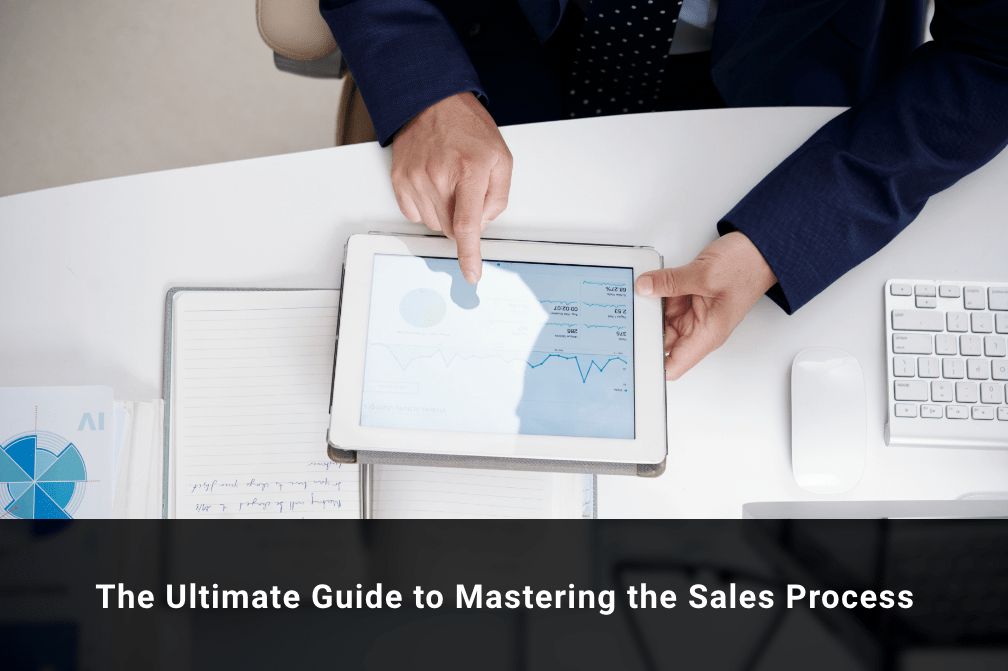Talking Heads: CMO-CIO Strategic Relationship for Growth

Table of Contents
With B2B customers demanding more from digital experiences, the contemporary roles of Chief Marketing Officer (CMO) and Chief Information Officer (CIO) have evolved. The convergence of technology and its use in mobilizing customer data has increased the interdependence between these C-suite positions.
As the saying goes, two heads are always better than one, and for any business, two leaders in alignment accelerate growth. When marketing and IT departments are in tandem, it helps your business create an optimized buyer experience while achieving its shared goals of growth.
This CMO-CIO partnership is more than a marriage of convenience. CMO's deep understanding of marketing needs and the customer journey informs the CIO's ability to unify systems and utilize data. Together, it leads to a desired digital experience for your customer.
Find out more about the key features of this partnership, beginning with the evolving role and responsibilities of these C-suite heads.
Evolution of CMO Role and Responsibilities
A significant shift in the role of the CMO today is blending creativity with data, the latter enabled by sophisticated marketing technology. Earlier, brand envisioning was the primary responsibility of the marketing head in an organization. Now, marketing has become entirely customer-centric.
To understand the customer better, CMOs now need advanced technology platforms like customer data platforms (CDPs), customer relationship management tools (CRM), and digital asset management tools (DAM) to get a complete view of the customer through these multiple data points.
CMOs are now teaming up with CIOs to achieve the technology infrastructure and analytics to support their consumers' journey.
Further, the top priorities of the CMO today is a convergence of marketing geared for technology and includes the following:
Enhanced Segmentation
In light of stricter data sharing and privacy policies, marketers must evolve new strategies for personalization using zero- and first-party data. The marketing heads need a creative approach to get their customer segmentation specific to their business to make it more accurate and detailed.
Data Analytics
After your customer segmentation is ready, the next CMO priority is getting accurate and relevant data. This would not only help in understanding customer needs but also achieve a targeted user experience.
Getting the right customer data platform (CDP) is the step in the right direction. With transactional, behavioral, and demographic data available in CDP, CMOs get a better picture of the customers and their interactions. The CMOs can use it to know how consumers interact with their website and make calculated optimizations.
Increased Automation
Automation is a de facto feature of marketing today. Streamlining processes and establishing the correct sales flow help run a business efficiently and reduce errors.
With the IT team's help, marketing departments can automate content creation and data analysis and generate insights and plans for execution. Automation enhances buyers' experience and saves time for the marketing team. In other words, automation in marketing maximizes team potential and ability to deliver at scale.
Each CMO priority today engages technology at every step, whether procuring data or automating a process. That's where CIO inputs become essential to find all the possible technical solutions and strategies for their marketing needs.
So what role would CIO play in marketing? Let's find out.
CIO's Role: Strategizing Technology for Growth
CIOs are at the forefront of the digital-first culture of any business organization. Their role now is more strategic and focused on procuring customer-centric data while leading businesses to be data-driven technological enterprises. Further, they must use technical and digital skills to innovate and strive for integrated teamwork across departments of their organization.
CIOs top priorities include:
Assimilating Technologies: for internal business functions and smooth sharing with distributors and business units.
Ensuring Scalability and Repeatability: The CIO needs to ensure that their major responsibilities – cybersecurity and data protection, technology updates with new releases, license price management, and maximization of business ROI on technology – can be replicated across different countries, business units, and distributors to increase sales.
Further, to manage the growing business scale, the CIO also ensures all the business teams are current by conducting constant training, updates, and security upkeep.
Evolving Data Insights: With continuous data available, the CIO's top priority is to find ways to bring it from every channel and multiple touchpoints for more depth and knowledge about customer preferences.
Invariably, each CIO's priority ties up to the needs of their business CMO. Hence, there is an excellent alignment scope and a partnership for growth.
Three Modes of Alignment Between CMO and CIO
Customer Segmentation and Personalization
The two pillars of a good marketing strategy – segmentation and personalization– are where the CMO takes the lead.
Segmentation brings added depth to different groups of buyers. Like, how an early adopter's usage of your product compares to that of a traditionalist, knowing how to target each based on each group's unique characteristics. That is the kind of accurate information that a CMO has access to move ahead and make the right decision.
In this decision-making process, the CIO is an effective collaborator, providing the CMO with the necessary data to effectively target each group. The CIO can also address any technology-related concerns and improve data and analytic competence even if there is no direct data to share.
This cooperative streak between CIO and CMO continues in the personalization strategy of any business. When 79% of customers engage with an offer only if it is personalized and incorporates previous interactions, the CIO provides a better understanding of B2B personalization as part of an optimized consumer experience. When combined with CIO's technical considerations, the CMO's customer expertise leads to data-driven insights that help deliver a targeted user experience.
Communication and Global Audiences
After segmentation and personalization, the next step for a CMO is to scale this content. These efforts provide significant insights into customer needs and the information they seek in making their purchase decisions.
To aid this process, the CIO provides the tools that make scaling possible. Details like local language and tax information make marketing communications clear and relevant through technologies built with global audiences in mind and their ability to scale content for buyers based in different parts of the world.
Syncing Technologies
Another essential circumstance where the CMO-CIO partnership thrives is in technology integration. Integration sometimes appears detrimental to business, with 42% of buyers claiming integration challenges as a top pain point with supplier technology.
The CIO assesses the available crop of technologies and its integration with distributors and business units, keeping in mind their different yet related business goals. They evaluate the technologies needed for their business to function effectively and keep an eye on aspects like commerce and fulfillment platform, marketing automation, CRM, and customer service. Their role is to recognize the gaps and find the right solutions to bridge them.
The CMO's role in this process is to lay out their department's needs, especially in marketing automation, keeping in mind how it will be utilized and how it integrates with other systems.
Conclusion
With common goals geared to a collaborative plan, marketing and IT are two sides of the same coin today. The three steps mentioned above are a starting point for a CIO and CMO partnership, which opens a world of endless possibilities. This convergence is conducive for cross-functional teams as well as enhances buyer insight.
The CIO-CMO partnership invariably leads to a competitive edge for your business by increasing marketing effectiveness and integrating organizational technology. It leads to a customer-centric focus and teamwork that ignites innovation and efficiencies that fuels your organization's growth.
Growth Natives understands this collaborative need and can help your business veer in this new direction. Write to us at info@growthnatives.com to shoot your queries or know more.
Author Box
Sakshi Arora
Sakshi Arora is a seasoned content writer and editor with extensive experience across various industries including B2C, B2B, travel, e-commerce, and IT. In her free time, she enjoys expressing her creative side through painting and writing poetry. She also finds solace in nature and has a deep spiritual connection. Music brings her immense joy.




